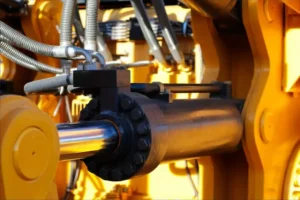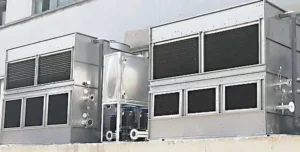Four methods of heating metal with electrical energy
Resistance heating
Resistance heating is a method that uses the resistance of the metal material itself to produce a thermal effect, converting electrical energy into thermal energy to heat the metal.
Principle: Add electrodes to both ends of the metal to form a short-circuit path and connect to the power supply. When current flows through the inside of the metal, heat is generated due to energy loss.
Applicable scenarios: suitable for metals with small sizes and simple shapes, especially where local heating is required.
Induction Heating
Induction heating refers to an electric heating method that generates heat energy by electromagnetic induction current (eddy current).
Principle: When alternating current passes through the coil (inductor) of the induction furnace, an alternating magnetic field is excited around it, passing through the heated metal material in the furnace, generating an induced electromotive force therein, thereby generating a strong induced current. Because the metal material itself has resistance, electrical energy is converted into heat energy to achieve heating purposes.
Type: According to the frequency of the power supply, induction heating equipment is divided into high-frequency induction furnaces, medium-frequency induction furnaces, and power-frequency induction furnaces. High-frequency furnaces are mainly used for metal heat treatment, smelting of special steel and special alloys; medium-frequency induction furnaces are mainly used for the smelting of special steels, magnetic alloys, etc., and sintering of refractory metals or non-metallic materials; power frequency furnaces are mainly used for metal smelting. and insulation.
Arc Heating
An electric arc between two electrodes generates intense heat, which can melt metal, compared with other electric heating methods, arc heating can achieve extremely high temperatures (such as over 3000°C)
Dielectric Heating
Dielectric heating uses the dielectric properties of materials to generate heat when exposed to an electric field. While it’s more commonly used in non-metal materials like plastics or food items, it can also be applied in certain metal heating processes, especially in composite materials or when metals are part of a larger system with non-metal components.

Why choose electric metal heating?
Controlled Precision:
Set and maintain specific temperatures for your metal, ensuring uniform heating without hot spots or inconsistencies.
Efficiency:
Direct application of electric heat minimizes energy waste, making the process more environmentally friendly and cost-effective.
Adaptability:
From small-scale hobbyist projects to industrial manufacturing, electric metal heating systems come in various sizes and configurations to suit your needs.

Choosing the right equipment
Type of Metal:
Different metals have varying electrical resistance properties, so choose equipment suitable for the specific metal you’re working with.
Temperature Range:
Ensure the equipment’s temperature capabilities align with your project requirements.
Size and Capacity:
Consider the size and quantity of metal pieces you intend to heat to select the right-sized heating system.
——First release date: December 8, 2023







